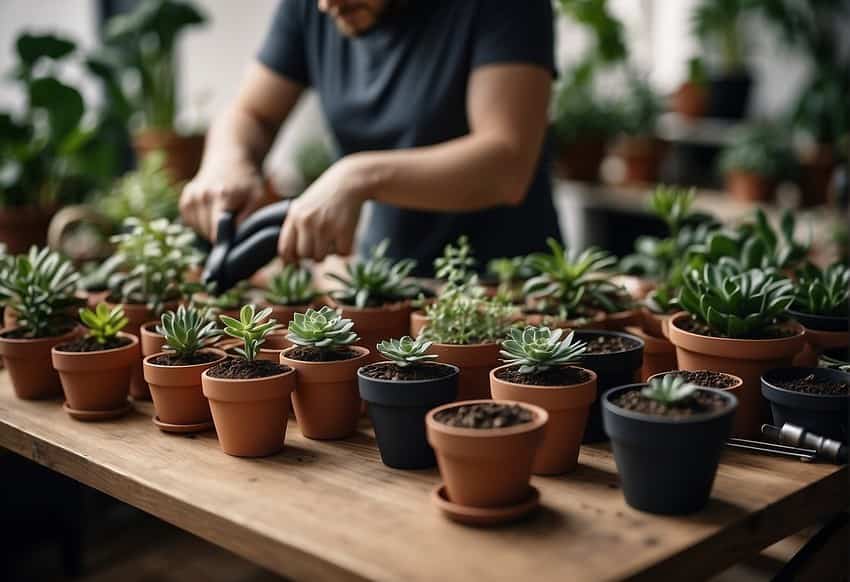Houseplants are a great way to add some color and life to your home. However, buying new plants can be expensive and time-consuming. Luckily, there is a simple solution: houseplant propagation.
Houseplant propagation is the process of creating new plants from existing ones. It’s a great way to expand your collection without breaking the bank.
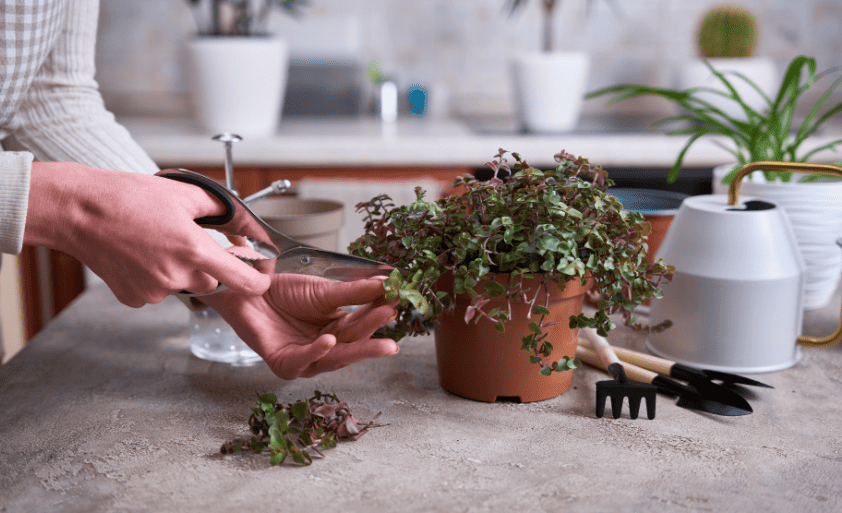
If you’re new to the world of houseplants, propagation may seem intimidating at first. But don’t worry – it’s actually quite easy, and there are several techniques that are perfect for beginners.
By learning how to propagate your plants, you can save money, create a more sustainable home, and even share your love of plants with friends and family.
In this article, we’ll cover some of the most popular houseplant propagation techniques for beginners. Whether you’re looking to propagate a spider plant, a pothos, or a rubber tree, we’ve got you covered.
By the end of this article, you’ll have all the knowledge you need to start propagating your own plants and expanding your collection.
Understanding Plant Propagation
Plant propagation is the process of creating new plants from existing ones. It is a basic technique that every beginner gardener should learn.
There are two main types of houseplant propagation: sexual reproduction and vegetative propagation. Sexual reproduction involves the use of seeds, while vegetative propagation involves using parts of the plant, such as leaves, stems, or roots, to create new plants.
Types of Propagation
There are several methods of vegetative propagation, including stem cuttings, leaf cuttings, division, layering, and grafting.
Stem cuttings are the most common method of propagation for houseplants. This involves cutting a stem from the parent plant, allowing it to root in water or soil, and then planting it.
Leaf cuttings involve taking a leaf from the parent plant and rooting it in water or soil. Meanwhile, division involves separating the parent plant into smaller sections and planting each section.
Layering involves bending a stem from the parent plant into the soil and allowing it to root before cutting it away from the parent plant. Lastly, grafting involves joining two different plants together to create a new plant with desirable characteristics.
Benefits of Propagation
Propagation has many benefits for beginners. It is an inexpensive way to increase the number of plants in your collection. It also allows you to create new plants that are identical to the parent plant, ensuring that you will have the same characteristics and qualities. In addition, propagation allows you to share your plants with others.
Getting Started with Propagation
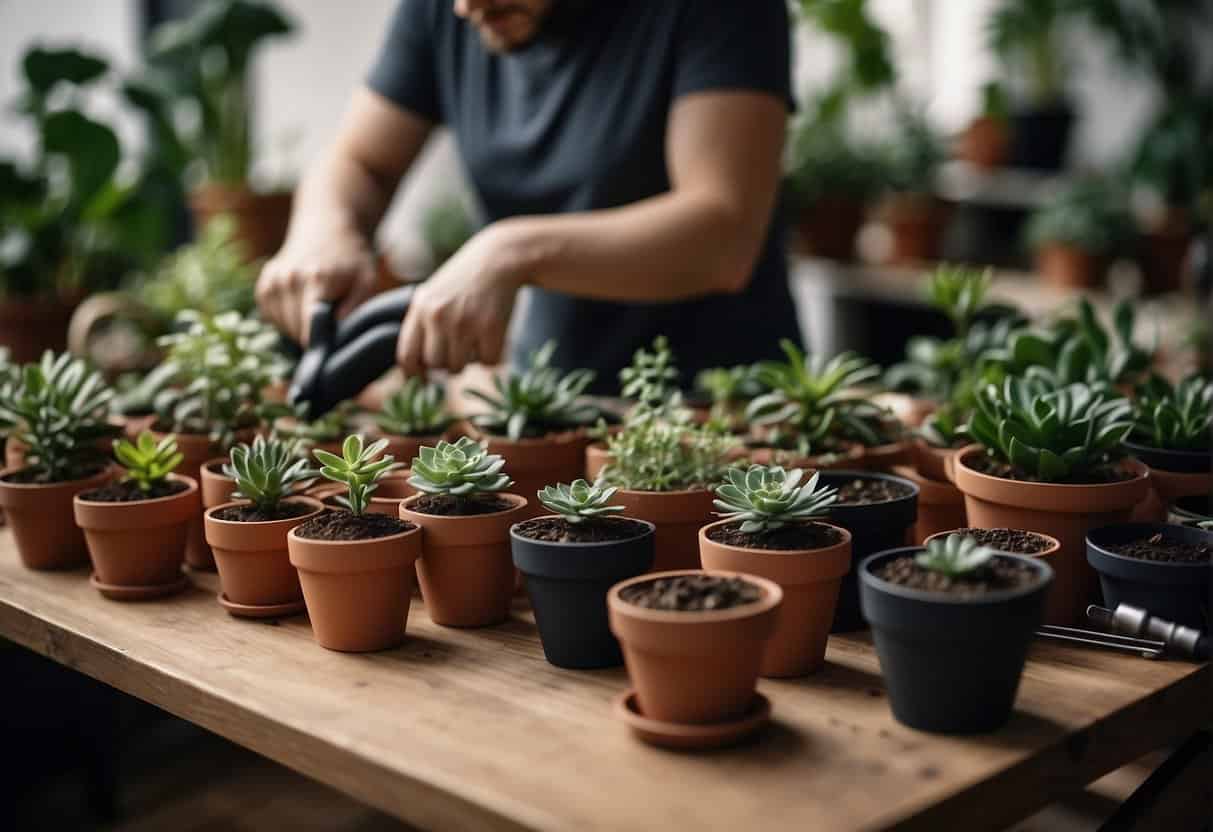
When it comes to propagating houseplants, beginners may feel overwhelmed by the process. However, with the right tools and materials, creating an ideal environment, and choosing the right plant, anyone can successfully propagate their favorite houseplants.
Choosing the Right Plant
The first step in propagation is choosing the right plant. Some plants are easier to propagate than others, so it’s essential to select a plant that is suitable for beginners.
Examples of plants that are easy to propagate include pothos, spider plants, and snake plants. These plants are known for their hardiness and ability to thrive in a variety of environments.
Tools and Materials Needed
To propagate a plant, you will need a few essential tools and materials. These include a sharp, sterilized pair of scissors or pruning shears, a clean container filled with a suitable propagation medium, and water.
It’s also helpful to have rooting hormone powder, which can help speed up the rooting process.
Creating the Ideal Environment
Creating the ideal environment for houseplant propagation is crucial for success. This includes providing the right amount of water, light, and humidity.
When it comes to water, it’s important not to overwater the plant, as this can cause root rot. Instead, water the plant when the soil is dry to the touch.
For light, it’s best to place the plant in a bright, indirect light source.
Finally, maintaining a high level of humidity can help speed up the rooting process. This can be achieved by covering the plant with a plastic bag or placing it in a humid environment.
Propagation Techniques
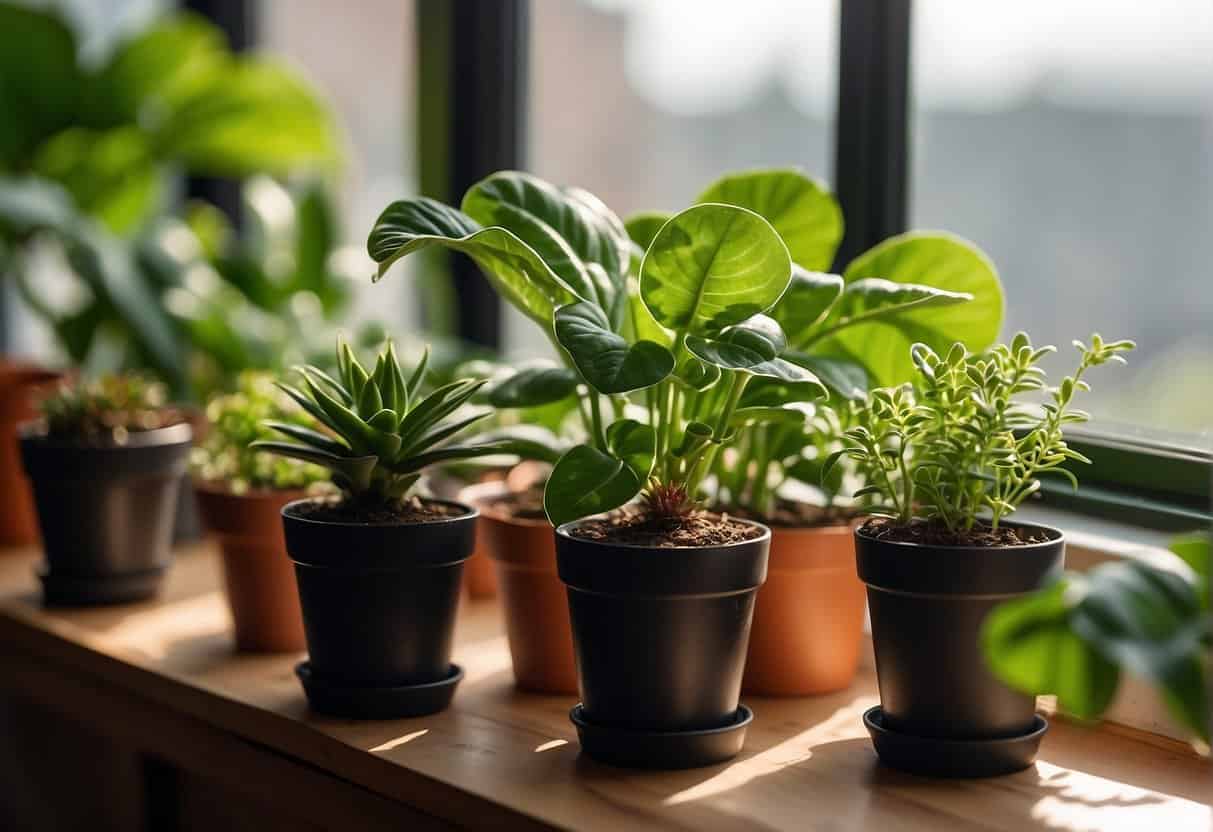
Houseplant propagation is an excellent way to expand your collection without spending much money. There are several propagation techniques that beginners can use to grow new plants. Here are the most common propagation techniques:
Stem Cuttings
Stem cuttings are the most popular propagation method for houseplants. This technique involves cutting a stem from the parent plant and allowing it to grow roots.
To propagate a plant using stem cuttings, follow these steps:
- Cut a stem from the parent plant that is about 4-6 inches long.
- Remove the leaves from the bottom 2 inches of the stem.
- Dip the cut end of the stem in the rooting hormone.
- Plant the stem in a pot filled with moist soil.
- Keep the soil moist and place the pot in a warm, bright spot.
- Wait for roots to grow, which usually takes 2-4 weeks.
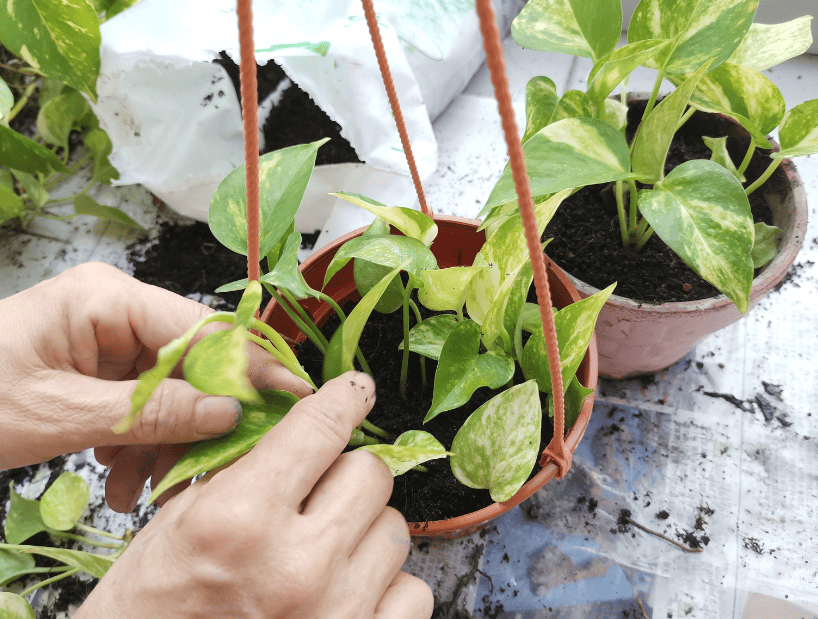
Leaf Cuttings
Leaf cuttings are another propagation method that is suitable for certain houseplants. This technique involves cutting a leaf from the parent plant and allowing it to grow roots.
To propagate a plant using leaf cuttings, follow these steps:
- Cut a healthy leaf from the parent plant.
- Cut the leaf into several pieces, making sure each piece has a vein.
- Dip the cut end of each piece in rooting hormone.
- Plant the leaf pieces in a pot filled with moist soil.
- Keep the soil moist and place the pot in a warm, bright spot.
- Wait for roots to grow, which usually takes 2-4 weeks.

Division
Division is a propagation method that is suitable for plants with multiple stems or bulbs. This technique involves dividing the parent plant into several smaller plants.
To propagate a plant using division, follow these steps:
- Remove the parent plant from its pot.
- Gently separate the roots into several sections.
- Plant each section in a separate pot filled with moist soil.
- Keep the soil moist and place the pots in a warm, bright spot.
- Wait for the plants to grow.
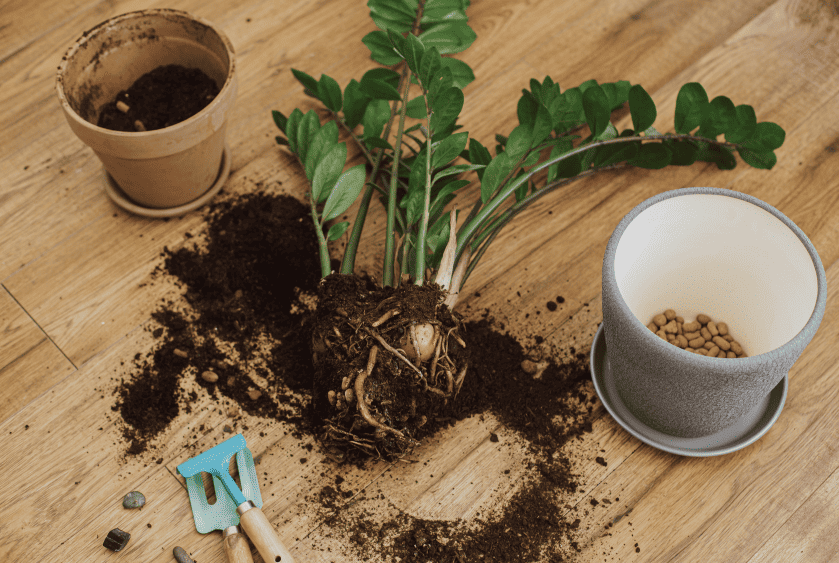
Air Layering
Air layering is a propagation method that is suitable for plants with thick stems. This technique involves creating a new plant by encouraging roots to grow on a stem that is still attached to the parent plant.
To propagate a plant using air layering, follow these steps:
- Make a small cut in the stem of the parent plant.
- Wrap the cut area with moist sphagnum moss.
- Cover the moss with plastic wrap and secure it with tape.
- Wait for roots to grow, which usually takes several weeks.
- Cut the stem below the roots and plant the new plant in a pot filled with moist soil.
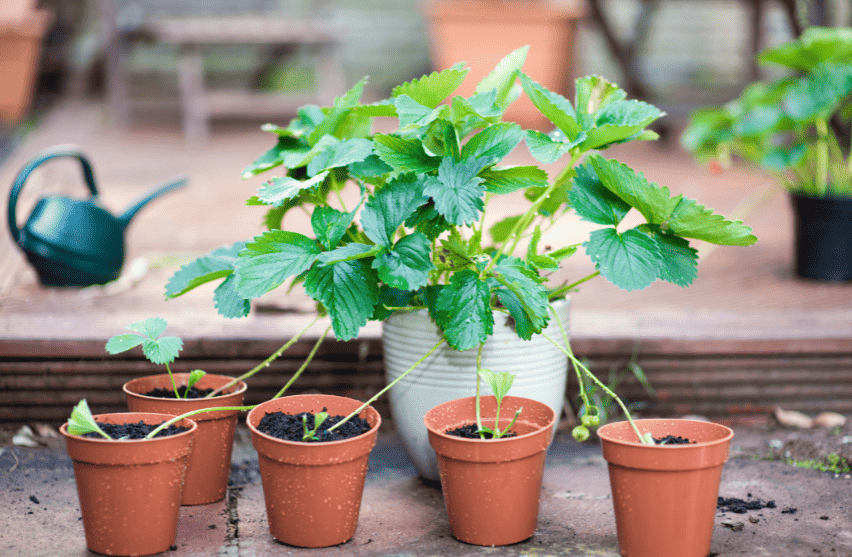
Seed Propagation
Seed propagation is a propagation method that is suitable for certain houseplants. This technique involves growing new plants from seeds.
To propagate a plant using seed propagation, follow these steps:
- Collect seeds from the parent plant.
- Plant the seeds in a pot filled with moist soil.
- Keep the soil moist and place the pot in a warm, bright spot.
- Wait for germination, which usually takes several days to several weeks.
- Wait for the plants to grow.
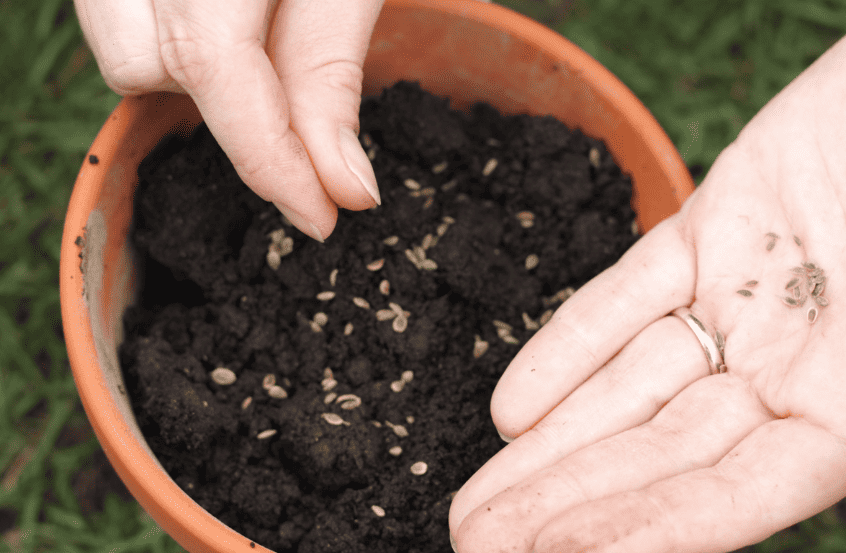
Common Houseplants and Their Propagation
Houseplants come in many different varieties, and each has its own unique propagation method. In this section, we will cover some of the most common houseplants and their propagation techniques.
Succulents and Cacti
Succulents and cacti are some of the easiest houseplants to propagate. They can be propagated from leaves, stem cuttings, or offsets.
Remove a leaf or stem cutting from the mother plant and allow it to dry out for a few days. Once the cutting has calloused over, plant it in well-draining soil and water sparingly until roots have formed.
Tropical Plants
Tropical plants, such as the African violet and bromeliads, can be propagated from leaf cuttings.
Remove a healthy leaf from the mother plant and place it in a small pot filled with moist potting soil. Keep the soil moist and in a warm, humid location until new growth appears.
Foliage Plants
Foliage plants, such as the snake plant, spider plant, and pothos, can be propagated from stem cuttings.
Cut a stem from the mother plant and place it in a glass of water. Once roots have formed, plant the cutting in well-draining soil.
Other common houseplants, such as the monstera, begonia, dracaena, ficus, ZZ plant, aloe, and kalanchoe, can also be propagated using similar techniques. It is important to research the specific propagation method for each plant to ensure success.
Caring for Newly Propagated Plants
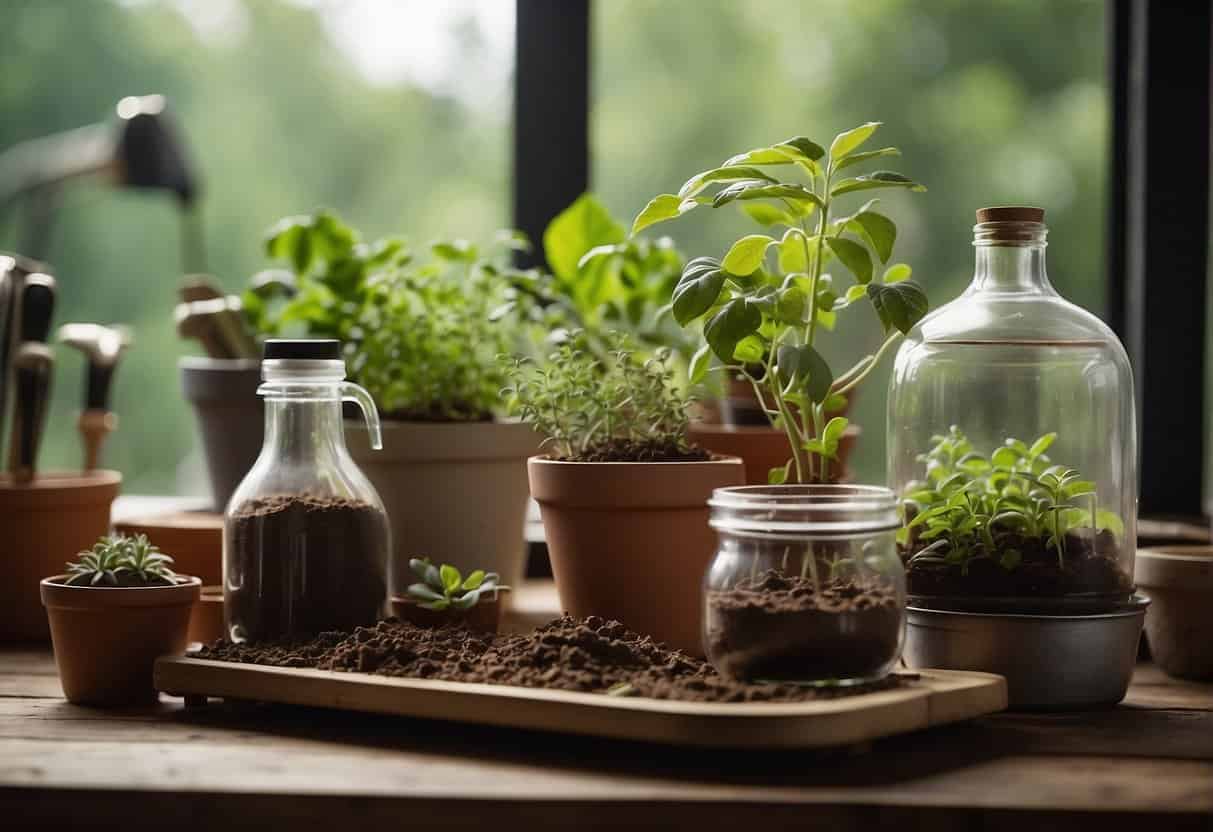
After successfully propagating your houseplants, it’s important to know how to care for them to ensure they thrive. This section will cover the necessary steps to take care of your newly propagated plants.
Potting and Soil Requirements
When potting your plantlets, you should choose the right potting mix. A good potting mix should be well-draining and nutrient-rich. A mix of peat moss, perlite, and vermiculite is a good option as it provides good drainage and aeration.
A good potting mix should be well-draining and nutrient-rich. A mix of peat moss, perlite, and vermiculite is a good option as it provides good drainage and aeration.
It’s recommended to use a pot that is slightly larger than the root ball of your plantlet. This will provide enough space for the roots to grow without overwhelming them.
It’s recommended to use a pot that is slightly larger than the root ball of your plantlet. This will provide enough space for the roots to grow without overwhelming them.
Watering and Feeding
Newly propagated plants require adequate watering and feeding to ensure healthy growth. It’s important to avoid overwatering the plants as this can lead to root rot. Water the plants when the top inch of soil is dry to the touch.
Fertilization is also important for the growth of your plants. Use a balanced fertilizer every two weeks during the growing season to provide the necessary nutrients for your plants.
Light and Placement
Newly propagated plants require indirect sunlight to prevent the leaves from burning. Place the plants in a location with bright, indirect sunlight. If you don’t have access to enough natural light, consider using a grow light to supplement the light.
It’s also important to place the plants in a location with consistent temperature and humidity levels. Avoid placing the plants near drafty windows or doors.
Monitoring for Growth and Health
Regular monitoring of your newly propagated plants is important to ensure they are growing and thriving. Check the soil moisture level regularly and adjust watering as necessary.
Inspect the plants for any signs of pests or diseases. If you notice any issues, take action immediately to prevent it from spreading to other plants.
Troubleshooting Common Issues
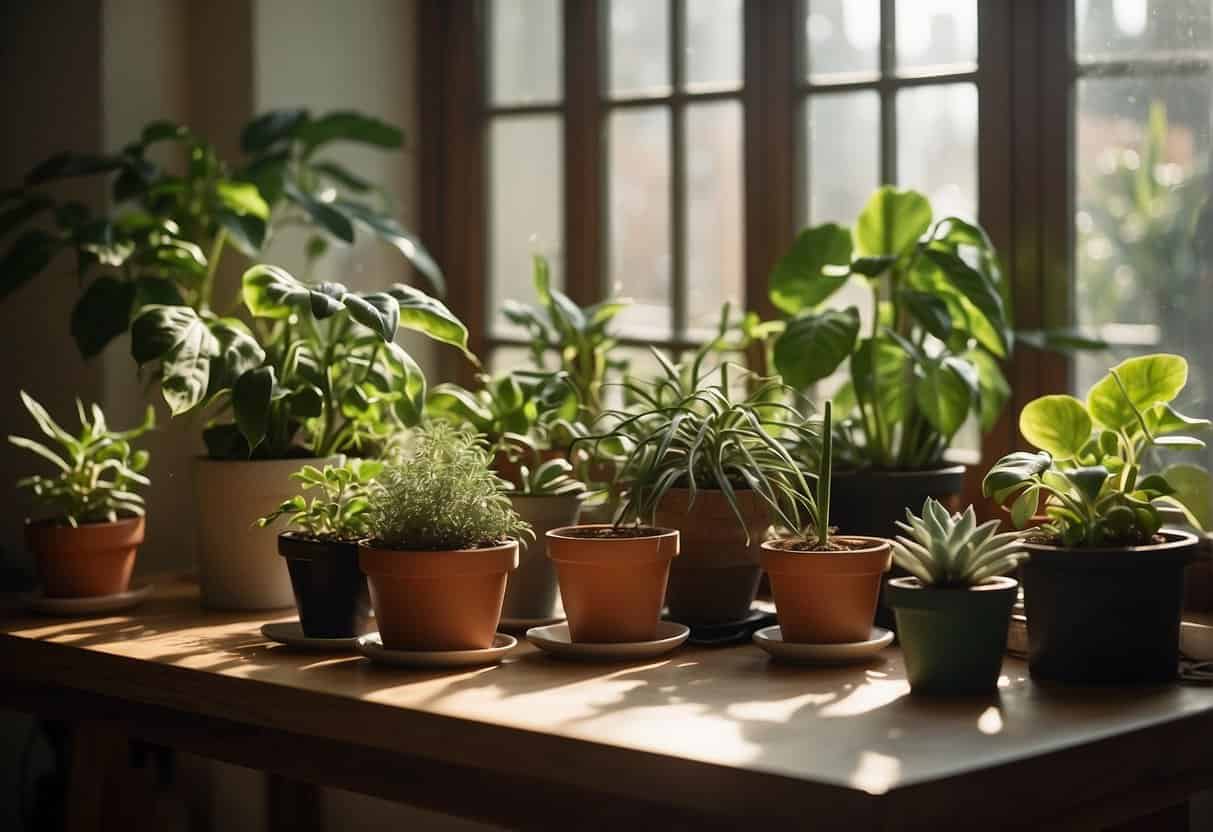
Houseplant propagation is an exciting and rewarding process, but it can also be challenging, especially for beginners. Here are some common issues that gardeners may encounter during propagation and how to troubleshoot them.
Dealing with Disease and Pests
Disease and pests can quickly spread in a propagation environment, potentially infecting all of your cuttings. To prevent this, you need to use clean, sterilized tools and keep your propagation area clean and free of debris. If you do encounter pests or disease, remove the affected cuttings immediately and dispose of them properly to prevent further spread.
Preventing and Managing Rot
Rot is a common issue that can occur during propagation. Overwatering, using the wrong soil mix, or keeping cuttings in low light can all contribute to rot. To prevent rot, make sure that your cuttings are in a well-draining soil mix and avoid overwatering. If you do notice signs of rot, such as wilting or yellowing leaves, remove the affected cuttings immediately and adjust your watering schedule.
Addressing Slow or Stunted Growth
It’s important to have patience when propagating plants, as it can take several weeks or even months for cuttings to root and begin to grow. However, if you notice that your cuttings are not growing or are growing slowly, there may be an underlying issue. Check to ensure that your cuttings are receiving enough light, water, and nutrients, and make adjustments as needed. Additionally, some plants may be more difficult to propagate than others, so it’s important to research the specific needs of each plant before attempting propagation.
Advanced Propagation Techniques
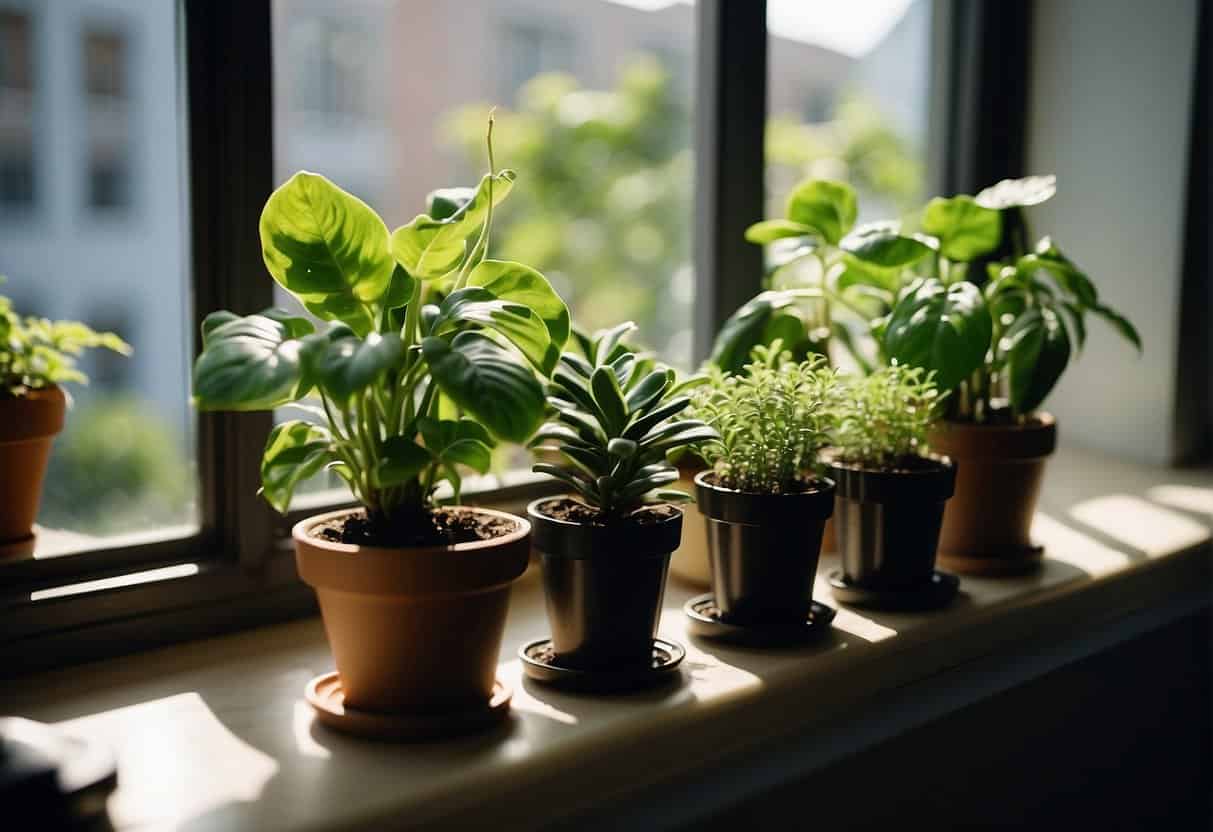
For those who are more experienced with houseplant propagation, there are several advanced techniques that can be used to create new plants. These techniques include grafting and budding, layering variations, and using growth regulators.
Grafting and Budding
Grafting and budding are techniques that involve taking a cutting from one plant and attaching it to another plant. This is done to combine the best traits of both plants into one. The process involves cutting a small piece of the plant, called a scion, and attaching it to the stem of another plant, called the rootstock. Then, you wrap the two plants together until they grow together and form a new plant.

Layering Variations
Layering is a technique that involves taking a stem from a plant and burying it in the soil until it forms roots. This can be done in several ways, including simple layering, compound layering, and tip layering. Simple layering is when a stem is buried in the soil and allowed to form roots. Meanwhile, compound layering is when several stems are buried in the soil and allowed to form roots. Lastly, tip layering is when the tip of a stem is buried in the soil and allowed to form roots.

Using Growth Regulators
Growth regulators are chemicals that can be used to stimulate the growth of new plants. They can be used to promote root growth, stem growth, or flower growth. There are several different types of growth regulators, including auxins, cytokinins, and gibberellins. These chemicals can be applied to the plant in several ways, including as a spray or as a dip.
By using these advanced propagation techniques, experienced plant propagators can create new and unique plants that combine the best traits of multiple plants. However, it is important to note that these techniques can be difficult and require a lot of skill and knowledge to be successful.
Building Your Plant Collection

Once you’ve successfully propagated your first houseplant, it can be hard to stop. Building a collection of plants is an exciting and rewarding hobby that can bring a lot of joy to your life. Here are a few ways to expand your plant collection:
Expanding Variety
One of the best ways to expand your plant collection is to try new types of houseplants. There are many different types of houseplants, each with its own unique care requirements and aesthetic appeal. Consider subscribing to a plant newsletter or following social media accounts of plant enthusiasts to learn about new types of plants to try.
Creating Displays
Another way to build your collection is to create displays using offsets, pups, or other propagating techniques. Once you have a few different types of plants, you can experiment with different arrangements and combinations to create beautiful displays. Consider using different types of propagation media, such as water or soil, to create unique displays.
Sharing and Trading
Finally, consider sharing your love of plants with others by trading or giving away cuttings, offsets, or pups. This can be a great way to connect with other plant enthusiasts and expand your collection even further. Just be sure to properly label your cuttings and provide care instructions to ensure they thrive in their new home.
Conclusion
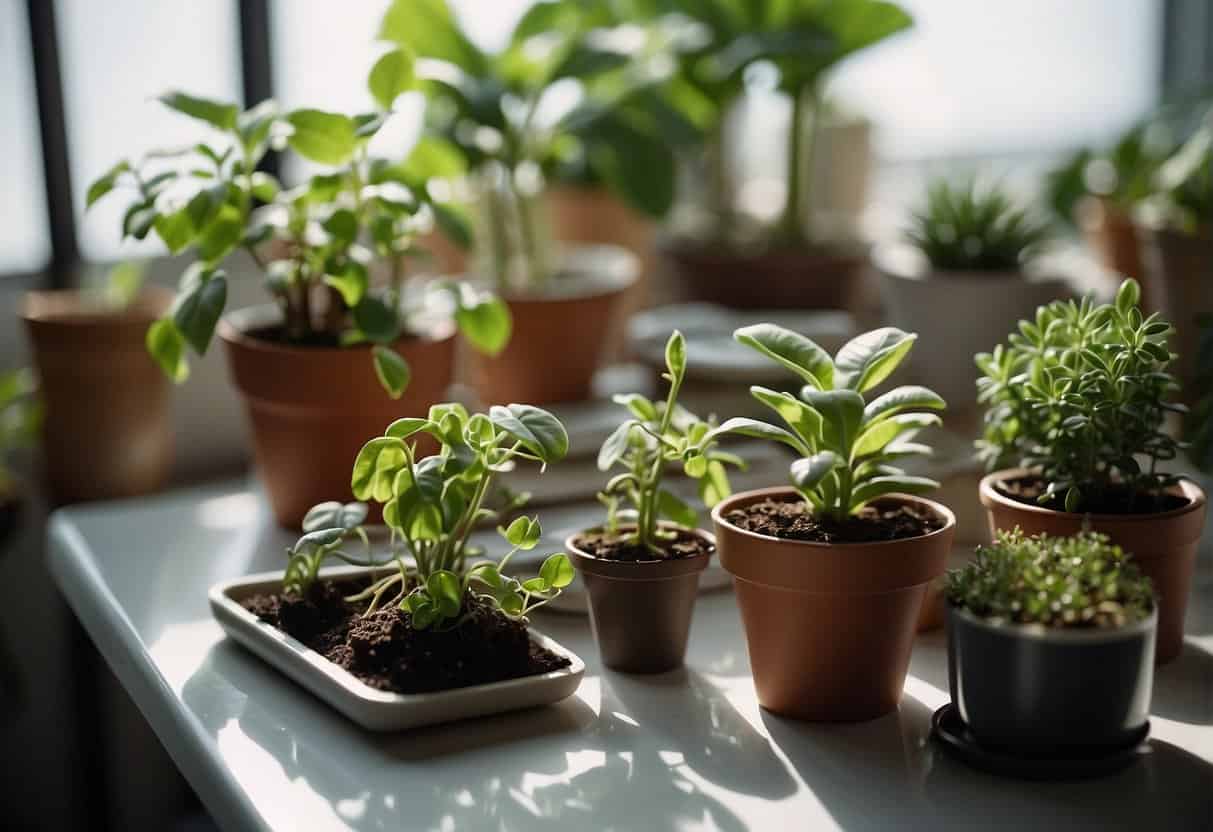
In conclusion, houseplant propagation can be an exciting and rewarding experience for beginners. With the right techniques and a bit of knowledge, anyone can successfully propagate their own greenery. It is important to be confident in your abilities and to have a clear understanding of the propagation process.
There are several techniques that can be used, including stem cuttings, leaf cuttings, and division. Each technique has its own set of requirements and can yield different levels of success. It is important to choose the technique that is best suited for the plant you are propagating.
One of the keys to success in houseplant propagation is to be knowledgeable about the specific needs of the plant. This includes understanding the ideal growing conditions, such as light, water, and temperature. It is also important to be aware of any potential pests or diseases that may affect the plant.
Overall, houseplant propagation can be a fun and rewarding way to expand your greenery collection. With the right techniques and a bit of knowledge, anyone can successfully propagate their own plants. Whether you are a seasoned gardener or just starting out, propagation is a great way to explore the world of plants and develop your skills.
Frequently Asked Questions

What are the basic steps for beginners to propagate houseplants?
The basic steps to propagate houseplants for beginners are to take a cutting from a healthy plant, remove the lower leaves, dip the cut end in rooting hormone, and plant it in a well-draining potting mix. Keep the soil moist and place the cutting in a warm, bright location. After a few weeks, roots should begin to form and new growth should emerge.
Which indoor plants are the easiest to propagate through cuttings?
Some of the easiest indoor plants to propagate through cuttings include pothos, spider plants, and snake plants. These plants are hardy and can tolerate a range of growing conditions, making them ideal for beginners.
What materials do I need to start a plant propagation station at home?
To start a plant propagation station at home, you will need a few basic materials, including a sharp pair of scissors or pruning shears, rooting hormone, well-draining potting mix, and small pots or containers. You may also want to invest in a grow light or place your cuttings in a warm, bright location to encourage growth.
How can beginners successfully propagate plants in water?
To propagate plants in water, beginners should take a cutting from a healthy plant and place it in a jar or vase filled with water. Change the water every few days and keep the cutting in a warm, bright location. After a few weeks, roots should begin to form and new growth should emerge. Once the roots are well-established, the cutting can be planted in soil.
What are the most common methods of propagating indoor plants?
The most common methods of propagating indoor plants include stem cuttings, leaf cuttings, division, and layering. Stem cuttings are the most popular method and involve taking a cutting from the stem of a healthy plant and encouraging it to form roots.
What are some simple and effective houseplant propagation tips for novices?
Some simple and effective houseplant propagation tips for novices include using a sharp pair of scissors or pruning shears to take cuttings. Also, rooting hormones should be used to encourage root growth.
Make sure to keep the soil moist and the cutting in a warm, bright location. It’s also important to choose healthy, disease-free plants to propagate. And be patient as the cutting develops roots and new growth.


